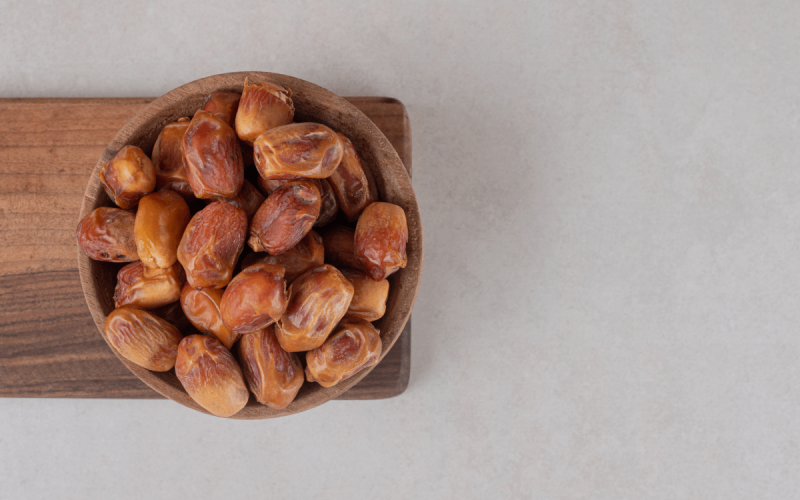Considered the oldest cultivated fruit in the world, fossil evidence indicates that dates go back at least 50 million years ago.
The scientific name, phoenix dactylifera, comes from ancient Greece. The coastal region between the Jordan Valley and Mediterranean Sea is known as Phoenicia, Greek for purple land, a nod to the purple dye made from poisonous sea snails that made the area famous. Because the date palm grew abundantly in Phoenicia, it was believed to be the trees homeland. It became known as Phoenix, or tree of Phoenicia, and was a symbol of the region and was featured on Phoenician coins. Dactylifera translates to “finger bearing”, a reference to the oblong shaped dates and the clusters they grow in.
Greek mythology connects the date palm to the immortal Phoenix. In Natural History(1 AD), Pliny the Elder describes the phoenix bird, who would build its next at the top of a date palm. After 500 years, the bird would catch fire from the flames of the sun and would be reborn from its own ashes. Some legends say that the date palm would die and come back to life along with the famous bird.
The date palm is of the Kingdom Plantae, Division Magnoliophyta, Class Liliopsida, Order Arecales, Family Arecaceae and Genus Phoenix, which contains 12-19 species of date palms. Their binomial name is Phoenix dactylifera.
Date palms reach a height of approximately 69 – 75 feet. The fruit isa short cylindrical shape about 1-3 inches in lenth and about an inch in diameter. The color ranges from bright red to bright yellow, to deep purple.
Dates, despite being very sweet, have a high nutritional value. They are rich in carbohydrates, dietary fibers, proteins, minerals and vitamin B complex. They are made up of about 70% carbohydrates (equal ratios of glucose and fructose) and contain calcium, iron, magnesium, and potassium.
Recently there has been increased interest in the health promoting properties of dates. Pharmacological studies have shown that dates are highly nourishing and may have numerous potential health benefits. They are believed to contain phytochemicals that may help to low cholesterol and decrease risk of diabetes, cancer, and cardiovascular diseases.
The date palm tree is native to deserts of North Africa and the Middle East. During the late 1800s, settlers from Southwestern America saw similar conditions suitable for growing dates. High heat, access to water, and an arid climate in late summer and autumn is exactly what date palms require to thrive.
The first attempt at growing date palms from seed failed, but cultivation was a success when nurseries and members of the USDA brought back offshoots from trees in the Middle East. The first two decades of the 1900s showed great promise for commercial cultivation.
Now most dates in America are grown in the Coachella Valley and the Bard Valley. Combined, these two areas have over 7500 acres of land for growing date palms. An annual date festival has been held in Indio, California since 1921.
An estimated 8.5 million metric tons of dates are produced annually, with countries in the Middle East and North Africa still being the largest producers.

